Recently I was fortunate enough to be present at an event in Beverley's beautiful GuildHall. The building has been in civic use for centuries and some of the structure dates back to medieval times - 1320. It was bought by the town of Beverley in 1501 and has been in civic use ever since.
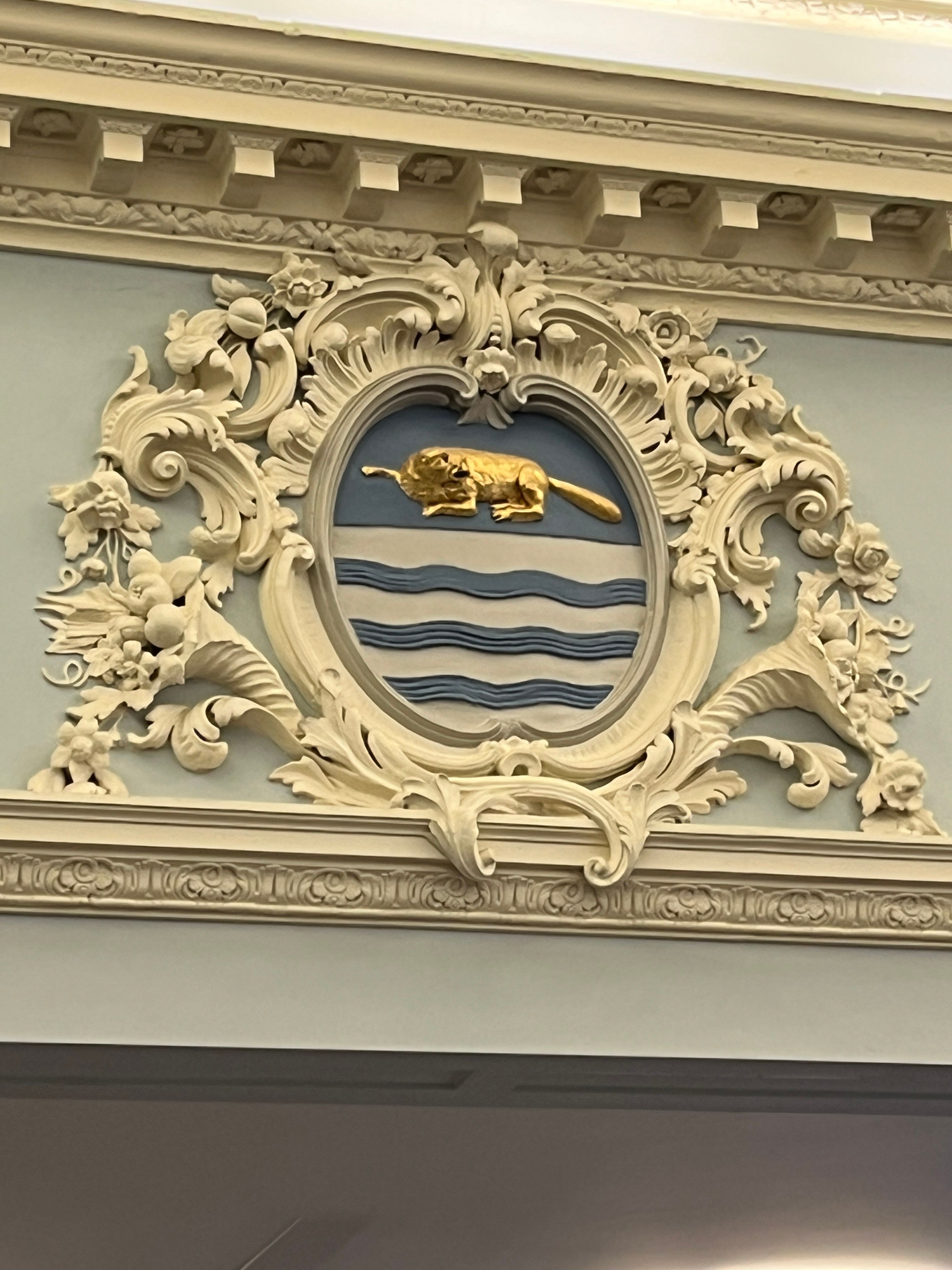
High on the wall we see the Beverley coat of arms which features a beaver and immediately below the waves of a lake. This may explain how the town acquired its name - beaver-lake - which became Beverley. Interesting that medieval society had its own system of branding and logos.
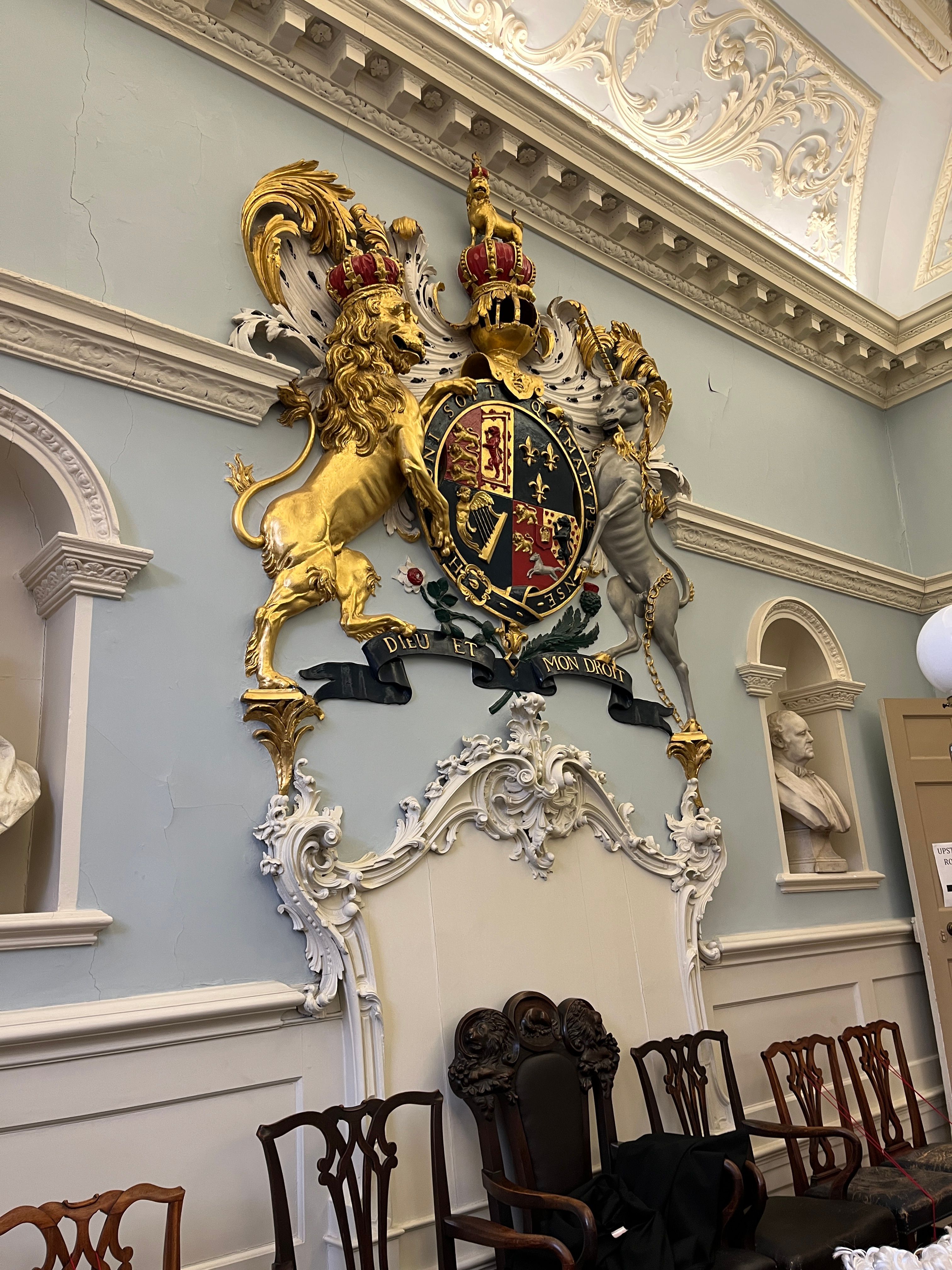
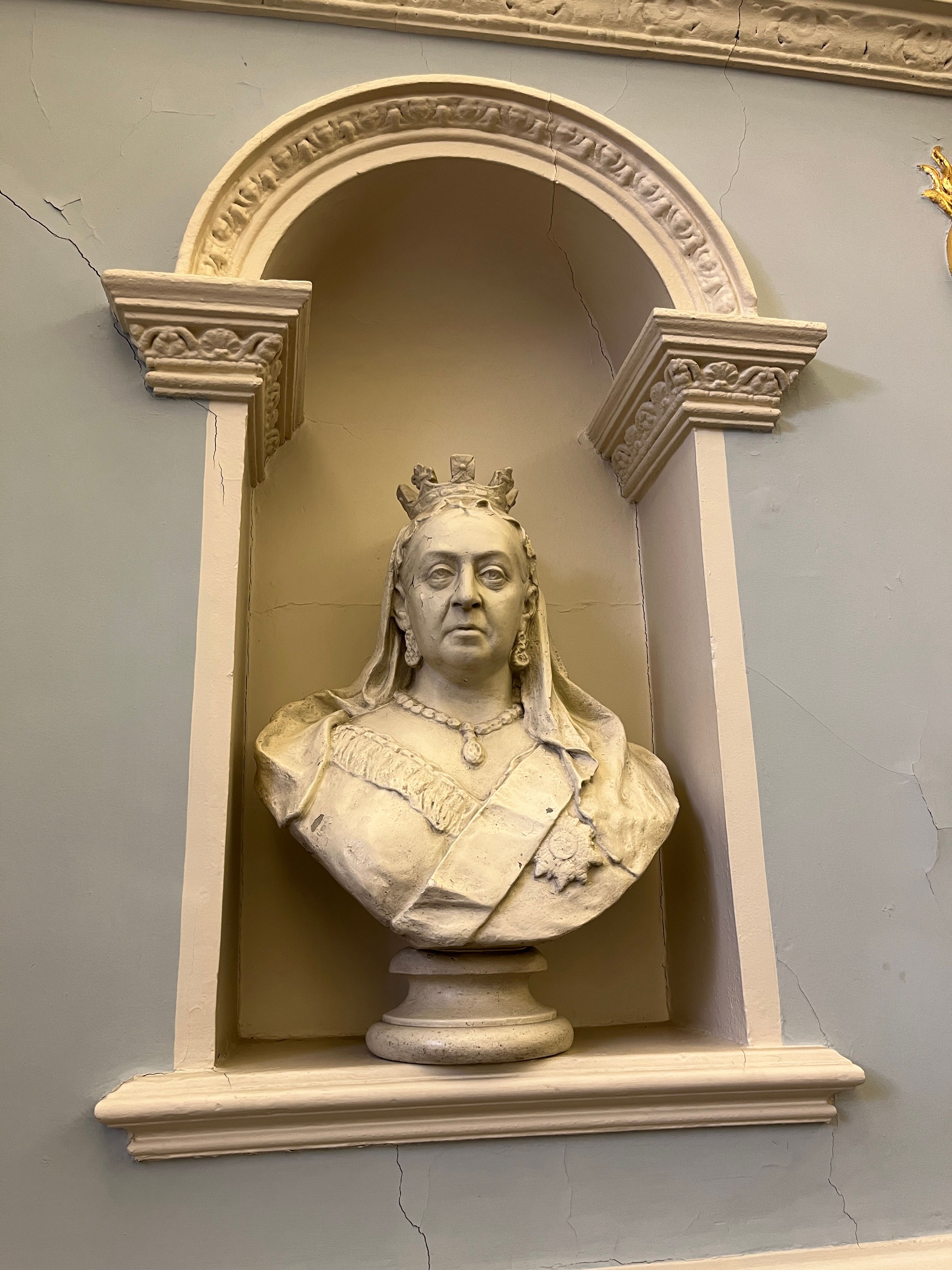

A bust of the late Queen Victoria gazes down at the visitor. One can almost feel the power that the British monarch wielded during this era.
The Guildhall functioned for many years as a courtroom. Above can be seen the symbols of justice among the clouds, which probably signifies that justice is God given. This very much fits the Georgian narrative where ultimately it is God who endows the monarchy with power, under the remit of the 'Divine Right' of kings. It is handy that God also underwrites the justice system too.
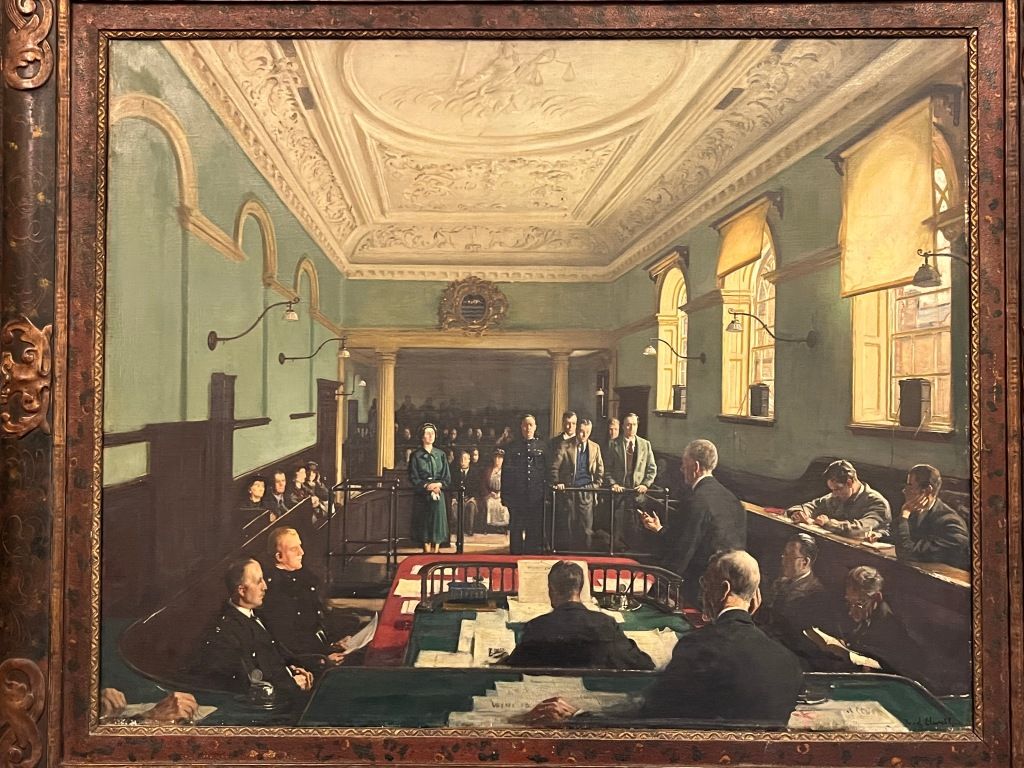
Fred Elwell is Beverley's best known local artist with good reason - he possessed great skill and recorded the life of the town in the early twentieth century. Composition, colour and technique are all superb in his painting 'The Police Court'.
For me it was a treat to be able to view this painting at close quarters.
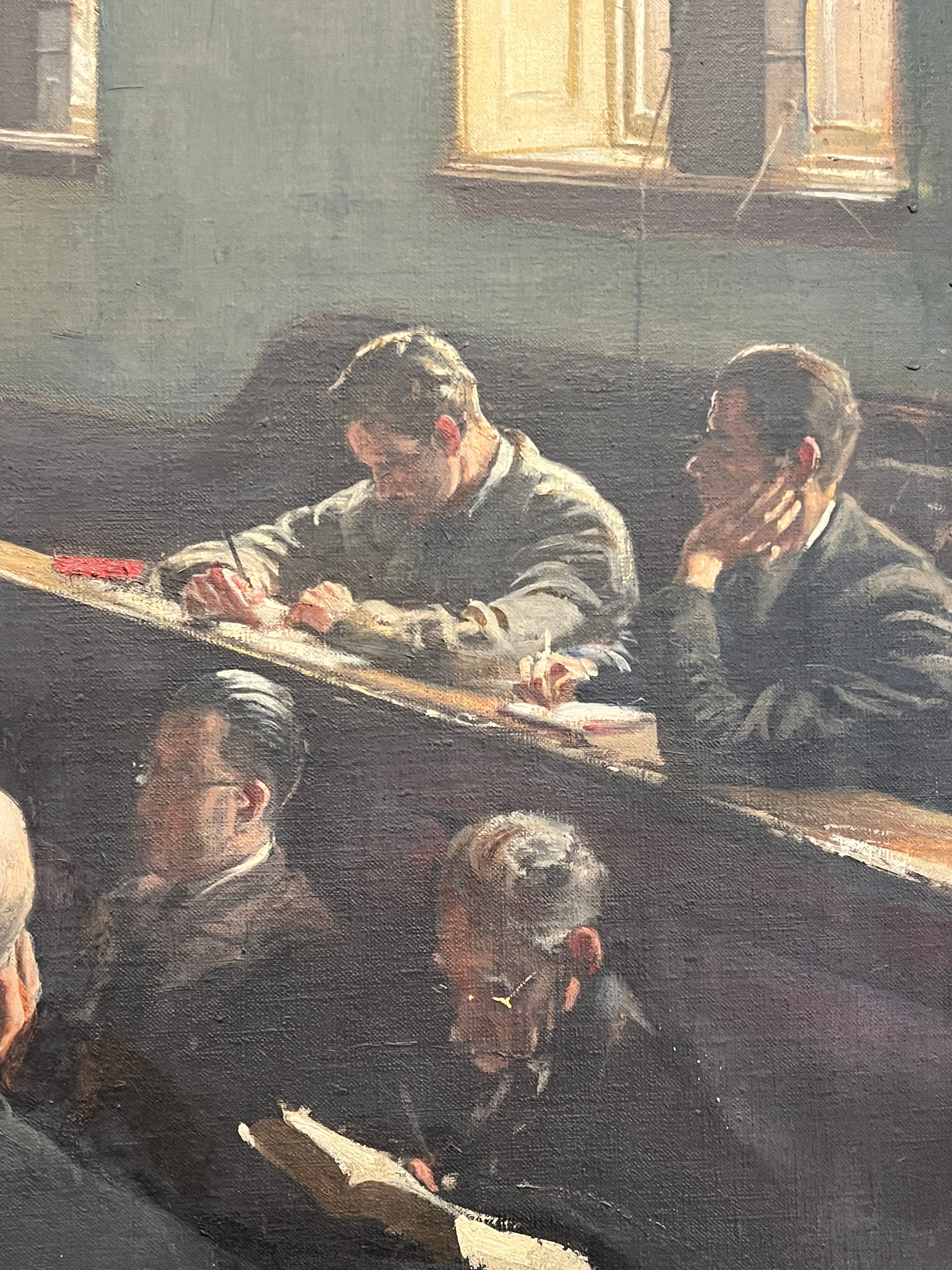
As in modern times the depicted court case has a busy press gallery and reporters write down details of the court's proceedings.
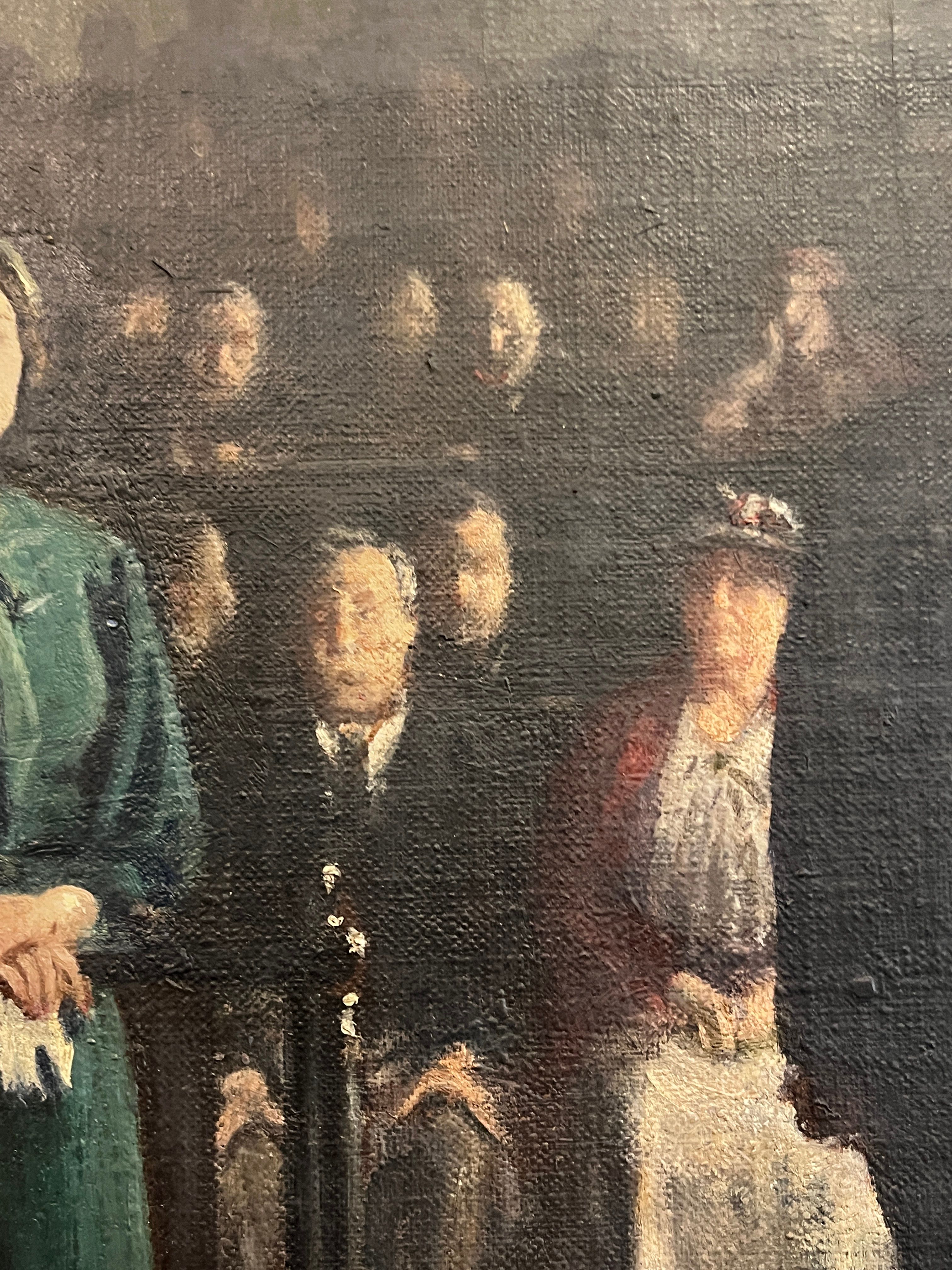
Witnesses and perhaps concerned family members listen to the proceedings. Elwell's handling of the small details is excellent and we see how painters suggest things, such as the faces of the public, and our imagination does the rest.
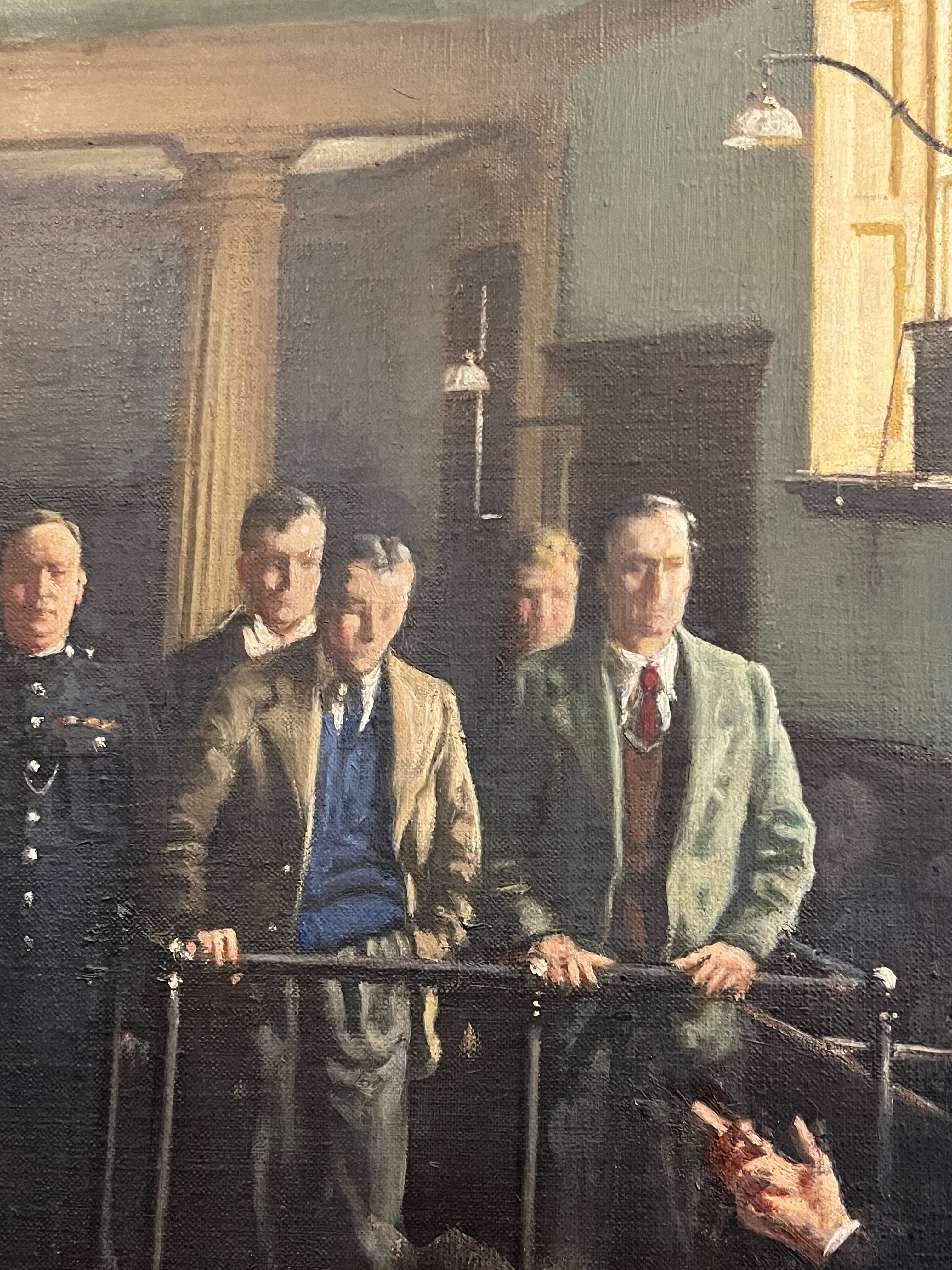
The defendant on the left looks down woefully as the accusations against him are heard. He has his hand in his pocket and this suggests a certain resignation about his fate in the trial. He looks as if he is guilty. The device of the hand on the pocket perhaps allows Elwell to pass his own opinion about the case.
The defendant on the right seems more defiant as if he strongly objects to what is being heard. However his hands on the rails suggest that he makes no argument against the proceedings. Does he also look as if he is guilty?
The defendants are not particularly closely guarded which suggests that they are not dangerous men.
Like any good painting, the more one looks at it, the more one sees.
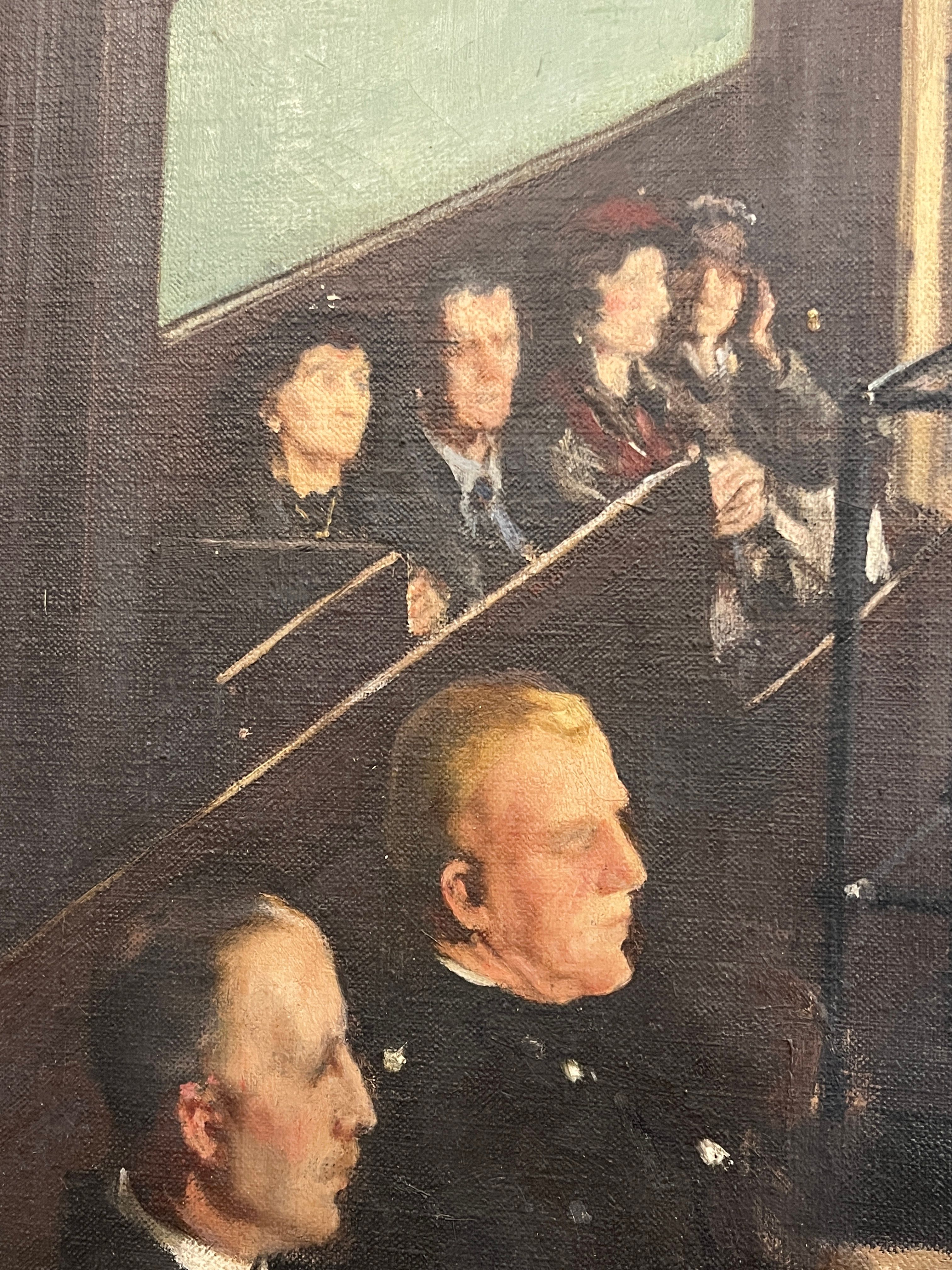
Policemen patiently observe the progress of the case. Again Helwell's painting of the faces is masterful, and captures the essential character in their features.








